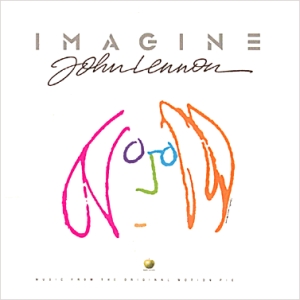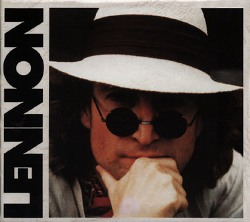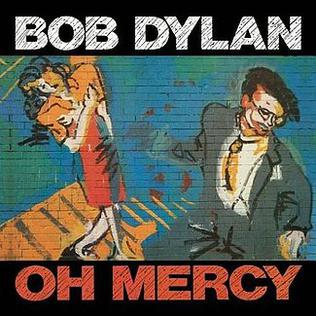
Right in the middle of the hair metal revolution came the announcement that Paul was going to tour the world, including America. Oh, and there’d also be a new album.
Flowers In The Dirt arrived amidst an exhaustive media blitz wherein Paul told the same stories with the same eyebrow raises and subtle nudges we knew by heart. (To his credit, Paul is oblivious to the sad fact that thousands of us know his history better than he does.) He was also sure to show off his old Hofner bass with the setlist still taped to it, as if he was picking up where he left off in 1966.
“My Brave Face” was upbeat enough to be a strong first single, if a little skewed; the late afternoon counterpart to “For No One”. It was the most successful of four included projects with Elvis Costello, who didn’t ignore the classic McCartney style and helped him to write what came naturally. “Rough Ride” starts out interestingly enough, but when performed live became background music while everybody headed to the john. It deserved better. “You Want Her Too” is a harsh sounding cartoon, and brought out the worst in both Macca and EC. (He’d point to this as a comparison to writing head-to-head with John—not a wise move.) “Distractions” is a half-asleep little number, and a step in the right direction. Then we go two steps back with the obvious “We Got Married”, the oldest recording in the set, produced by MOR yawnmeister David Foster; even he said it wasn’t a good song. “Put It There” ends the side pleasantly enough, with a “Blackbird”-type accompaniment and inoffensive lyrics about fatherly advice.
The second side begins with a possible future classic, “Figure Of Eight”. It would be reworked the following year when released as a single; that version seems better rounded, but this original still shows off all the hooks. “This One” is almost as good, even when the words get clumsy (“if I never did it”—thud). But it’s also the last above-average song here. Neither of the other two Costello songs flow well; “Don’t Be Careless Love” is written in too high a key for either of them, and while “That Day Is Done” would be much better served eight years later when performed by the Fairfield Four in a gospel harmony setting, this rendition has only the briefest glimpse of its potential. “How Many People” is very well intentioned, but Paul never learned not to write protest songs. “Motor Of Love” is slathered in Cars keyboards and a Tears For Fears mix to the point where the bare framework of the song is camouflaged.
That’s how the LP ends—the CD finishes with “Ou Est Le Soleil?”, which is worse than even the instrumentals left off of McCartney II. He liked it so much he sanctioned numerous extended remixes of it. It’s safe to say the vast majority of the consumers who bought all those versions didn’t listen to each more than once, if at all. (The same could be said for the disposable “Party Party”, included as a single with a re-release of the album in certain territories to promote the tour.)
With all the different producers credited on all the songs, it’s only natural that Flowers In The Dirt is a schizophrenic listening experience. It retains its late ‘80s glaze, but at least the musicians who would accompany him around the stages of the world are credited and pictured. It’s certainly better than most of what he spent the decade doing, and it has not aged well at all. But just as in 1976, we didn’t care about the new songs—we were gonna see him on stage again.
Nearly three decades later, when it was reissued after many delays as part of his ongoing Archive Collection series, Paulie made the smart move of including all of the much-bootlegged demos recorded with Costello on the two-disc expansion, making it essential for EC fans. In the more expensive Deluxe Edition, a third disc contained full band demos of the same Costello co-writes, giving an intriguing glimpse into the album’s early incarnation as a full Costello collaboration, including songs that would eventually make it to future albums by both guys. However, most (but not all) of the pertinent B-sides and remixes were offered as downloads only, along with three further rare Costello demos that also saw separate release as a limited-edition cassette. (Yes, a cassette. In 2017.) While much could be said of the improved fidelity—and making it easy to delete over half an hour dedicated to variations on “Ou Est Le Soleil?” and “Party Party” from one’s hard drive—McCartney’s ongoing indifference to what his fans really want, not to mention the whole point of an “archive”, continues to disturb.
Paul McCartney Flowers In The Dirt (1989)—3
2017 Archive Collection: same as 1989, plus 9 extra tracks (Deluxe Edition adds another 9 tracks plus DVD and downloads)
 Another tour, another three-record set. Paul’s world tour was a huge success everywhere it went, and Tripping The Live Fantastic was a natural souvenir for everyone who saw it. Like Wings Over America, it includes nearly every song performed on the tour, including some never performed before onstage, plus bonus soundcheck material of varying interest.
Another tour, another three-record set. Paul’s world tour was a huge success everywhere it went, and Tripping The Live Fantastic was a natural souvenir for everyone who saw it. Like Wings Over America, it includes nearly every song performed on the tour, including some never performed before onstage, plus bonus soundcheck material of varying interest. 





